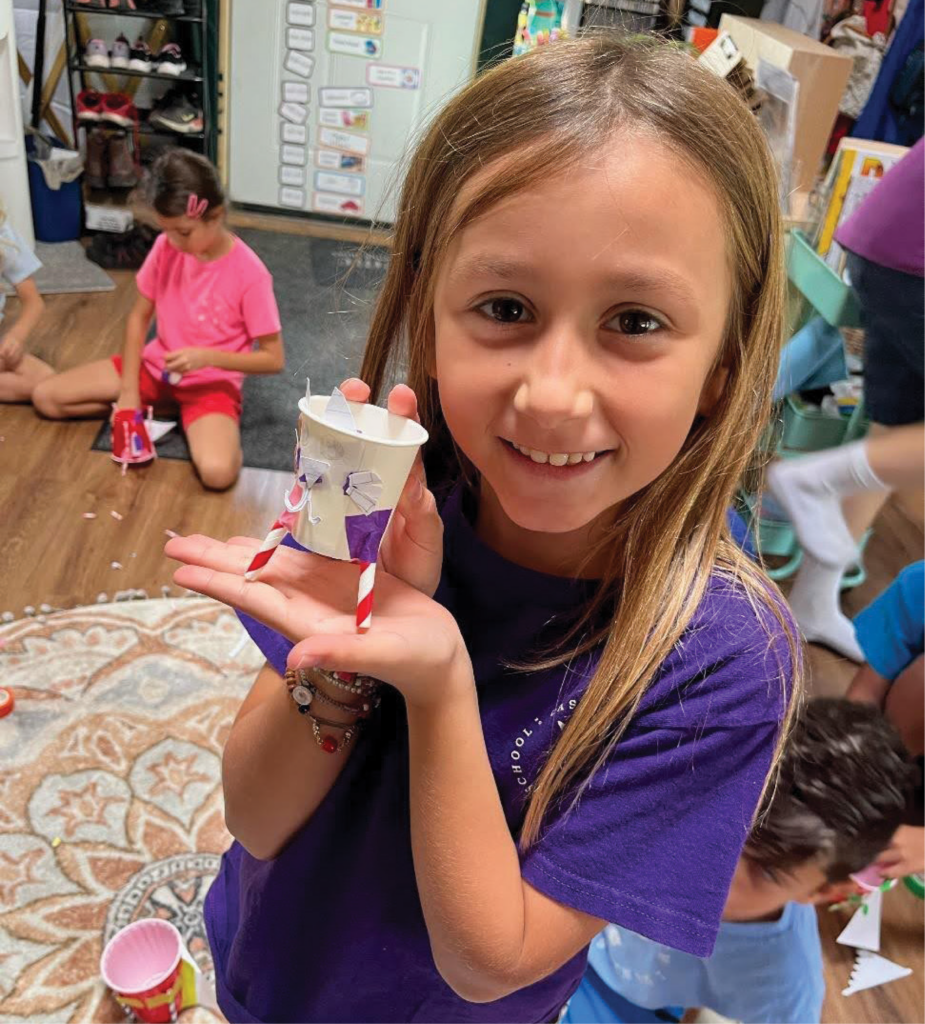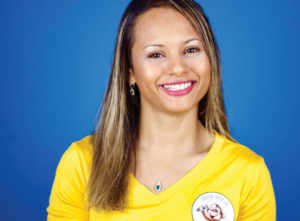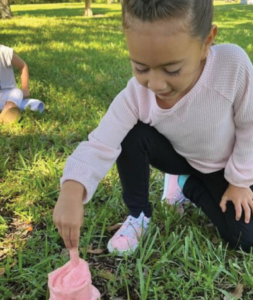
Editor’s note: This story is one of five spotlights included in our latest special report, “A Taste of À La Carte Learning.”
Florida has long had a critical shortage of public school science teachers. But growing numbers of students in South Florida’s booming alternative education networks are learning science from a real-life scientist.
Dr. Neymi Layne Mignocchi has two master’s degrees in biology and experimental psychology and a Ph.D. in neuroscience. She worked for six years as a molecular biologist at the Max Planck Florida Institute for Neuroscience. Her research accomplishments include developing a genetically encoded sensor for oxytocin, which plays a critical role in childbirth.
After the birth of her first child four years ago, Mignocchi decided to home-school and embark on a career path that would combine her love for science with her love for teaching.
Eye of a Scientist customizes experiential science lessons for students who are either home-schooled or in micro-schools. Most of them are in elementary grades.
Mignocchi began three years ago with 30 students. Now she’s teaching more than 150. The demand is so great that Mignocchi recently hired a graduate student in science to help teach some of her classes, and she’s interviewed a second for the likely expansion ahead.
“This is progressing faster than I ever expected, “She said.
Mignocchi’s goal is to inspire students and teachers.
She wants the former to know that they, too, can grow up to be scientists and the latter to know that there are other ways to deliver science instruction that might be more effective for students and rewarding for themselves.
On a muggy morning last fall at Tree Tops Park in Davie, about 10 miles from Fort Lauderdale, Eye of a Scientist was in full swing with a dozen kids in grades K-2 and their gently hovering parents.
This day’s lesson was all about carbon.
Mignocchi started with the big picture, telling the kids about matter, atoms, and subatomic particles. At the same time, she doled out craft supplies for the fun part: building a 3-D replica of a carbon atom. She proceeded to spell out directions for constructing the atoms out of pipe cleaners and colored beads while peppering the students with more facts and concepts.
The Eye of a Scientist had The Flow of a Maestro. Somehow, every student stayed focused on what they were building and what they were learning.

“Carbon is the backbone of life,” Mignocchi told them. “Without carbon, life would not exist. Without carbon, you would not exist.”
Repeating definitions and fun facts was part of the lesson.
“Do bananas have carbon in them?” YES!
“Do apples have carbon in them?” YES!
“Do pancakes have carbon in them?” YES!
At the end of the lesson, each student had a colorful model of a carbon atom, complete with six electrons, six protons, and six neutrons, that they could hang in their homes. They also had their first lesson in chemistry which Mignocchi would build on with future lessons.
“You have to prime these students’ brains,” she said. “You have to do it when they’re the most curious, when they’re younger.”
“Teaching in this manner helps students connect with the information because they’re literally experiencing it in real life,” she continued. “They’re learning to understand the world they’re living in, in a better, more direct way in comparison to sitting down in the classroom and just reading some paragraph about it.”
Many of the students at the micro-schools and co-ops that Eye of a Scientist orbits use ESAs. Mignocchi recently became an approved provider through Step Up For Students, the nonprofit that administers the state’s choice scholarships (and employs the author of this white paper), so parents can channel ESA funds to her directly rather than pay out of pocket and seek reimbursement. Her expectation is that this will allow her to serve an even broader range of students.

Mignocchi’s life story informs her mission. Her family fled Venezuela for America when she was 8 years old, and she went on to become a straight-A student in public schools. But she found out when she got to college that she was not ready to meet basic expectations in science.
Later, Mignocchi spent time tutoring public school students in science and found that they, too, were woefully unprepared.
With Eye of a Scientist, Mignocchi aims to fill those gaps, particularly with low-income students. That’s another reason, she said, she supports ESAs. They will allow more low-income families to access learning alternatives that may be best for their kids but in the past were out of reach.
“What I want,” she said, “is a level playing field.”


